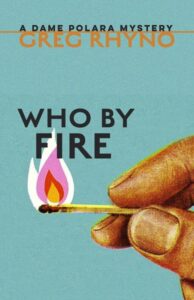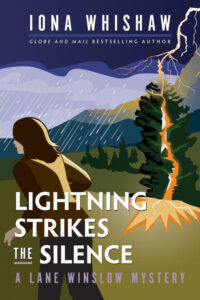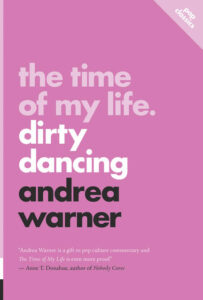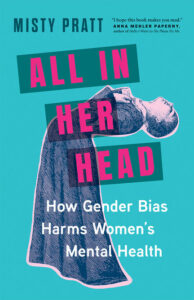May 1, 2024
Who By Fire, by Greg Rhyno
In his excellent, riveting, heartful and hilarious second novel, Who By Fire, Greg Rhyno pays tribute to the fact that all the best classic detective novels always include some dame. Although his dame is not just any dame, instead Dame Polara, truly an original, only daughter of legendary PI Dodge Polara, whose brain is now scrambled after a stroke. If elder care wasn’t stressful enough, Dame is recently divorced, her latest IVF round has failed, her dodgy landlord keeps demanding she catch up on rent bills she can’t afford, and her straight job at Toronto City Hall working with heritage preservation is starting to seem pretty futile, particularly as a string of arsons take down one listed building after another. In spite of her best instincts, and out of desperation, Dame finds herself taking on a domestic case on her dad’s behalf, though she’ll be performing the investigation herself, which shouldn’t be so hard, right? After all, she’s the kid whose dad used to lock her out in the cold in order to deliver essential lessons in lockpicking, and she’s tagged along on all his stakeouts. But it turns out the case is connected to something sinister afoot in the city, and the true culprit is closer to home than Dame will ever imagine, putting her in serious danger, and forcing her to rely on her wits when the stakes have never been higher. I loved this book. A pitch-perfect pleasure.
May 1, 2024
The Road to England, Via Leicester

My first Substack essay for paid subscribers went up yesterday and I’m so proud to have created my fourth of these long-form essays, such a cool and fulfilling creative challenge. This one is about how Adrian Mole’s diaries have been foundational texts and my gateway to English culture. How I’ve never seen how the heather looks, but I learned about the Midlands, about the time I ran away to find an English husband, and how there was actually once a time when I didn’t know what a scone was. Paid subscribers can read it here. Thanks to everyone who has paid to subscribe—your support is so meaningful and helpful to me.
I have two subscriptions left for my dedicated blog readers, just to thank you for all your support of my work here. Drop me an email at klclare AT gmail DOT com if you’d like to claim one.
April 30, 2024
Lightning Strikes the Silence, by Iona Whishaw
There’s not much I love better than a return to King’s Cove, the bucolic hamlet near Nelson, BC, where the fictional Lane Winslow makes her home after a tumultuous WW2 during which she’d served as a special agent, utilizing her quick wits and affinity for the Russian language. When Lane arrives in 1946, England left behind her, she’s envisioning a quiet life, a chance to dedicate herself to writing, a retirement of sorts, even though she’s still young herself, but it seems that fate disagrees, as she stumbles across a body and manages to solve the crime, in partnership with the Nelson Police Department, a partnership that’s solidified with Lane’s relationship and eventual marriage to Inspector Frederick Darling a few books into the series. And now we’re on Book 11, Lightning Strikes the Silence, and it seems that Lane’s life hasn’t been quiet for a moment, and is even less quiet than usual when the sound of an explosion is heard high on the mountain above King’s Cove. Meanwhile, in Nelson (on Baker Street!), the local jeweller has been found dead, his office ransacked, and Inspector Darling is a bit pleased about having come upon his own corpse for once, without his dear wife’s involvement, but it won’t be long before Lane is embroiled in the case as well, in addition to caring for a young Japanese-Canadian child found injured by the explosion site. In 1948, with the war long over, Canadians of Japanese ancestry are still forbidden to return to coastal areas, their homes and livelihoods taken from them, and anti-Japanese racism is rampant. Will goodness triumph? Will Lane and Darling crack the case? Will Ames finally do something with that engagement ring he’s got hiding in his pocket? Book 11, and the series gets better and better. Lightning Strikes the Silence does not disappoint.
April 29, 2024
Bookspo Episodes 8 & 9
This is the point where I can definitively say that I figured out what I was doing in regards to my podcast. These latest two episodes are conversations about two of the best books of the Canadian literary season (two books which have very little in common than the fact that both are excellent) and I hope you enjoy them as much as I did. Listen at Apple Podcasts or Substack, or wherever you get your podcasts.
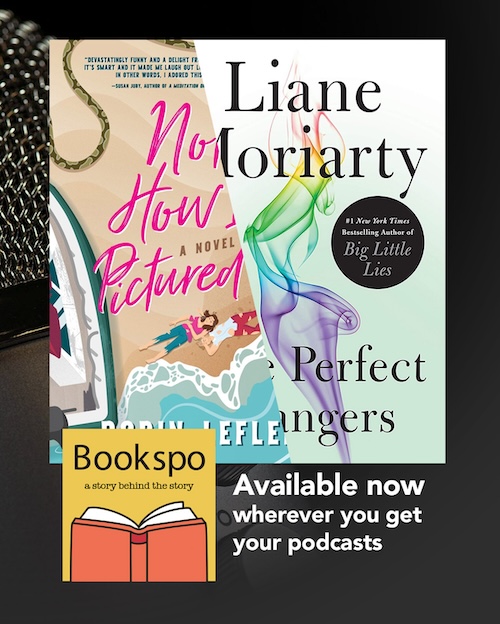
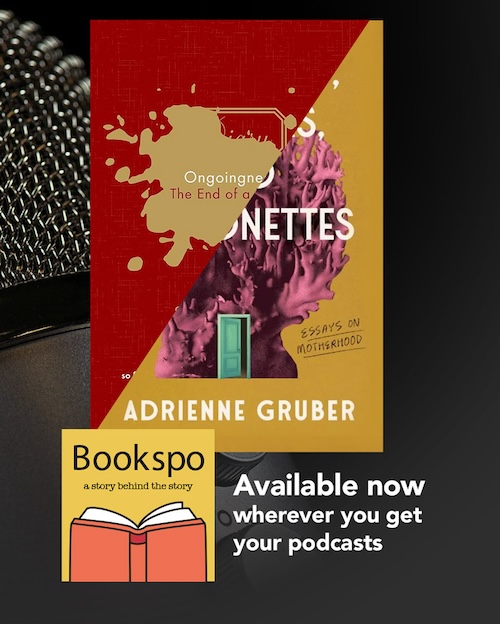
April 29, 2024
On Being Chosen
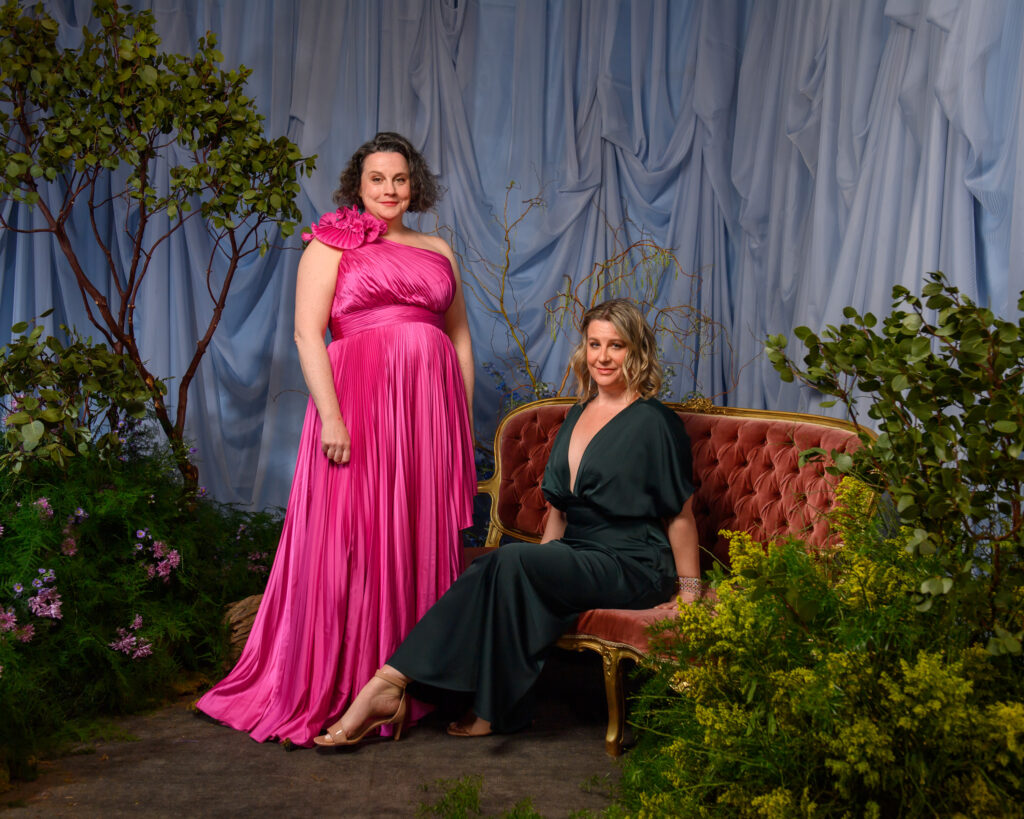
I’ve had a very fun and action-packed couple of weeks literary-wise that continues with tomorrow’s trip to Waterloo to interview Iona Whishaw about her latest Lane Winslow book. And a highlight was Thursday’s Biblio Bash at the Toronto Reference Library, a gala event at which I was invited to be a guest author. I’d attended once before in 2017 when my first novel came out, and the whole experience was intense, awesome, very overwhelming—plus I got my makeup done at the drug store and told them the look I was going for was “very dramatic” and ended up resembling a drag queen, and I’m still traumatized, no offence to drag queens. This time I had the benefit of hindsight and hired someone excellent to do my makeup, plus I’m about 300 years older than I used to be (pandemic effect) which meant I behaved with aplomb, looked quite fantastic, and drank so little that I woke up in the morning without a hangover, but still had lots of fun. It was a very good night and the Toronto Public Library Foundation raised more than a million dollars.
But I was cognizant through the entire process too that a big part of the experience (and one of its chief appeals, beyond the stunning portraits) was the feeling of being chosen. An exclusive event, an opportunity to mingle with the fancy people and wear a floor length gown. And I’ve been reflecting on this a lot, how much of the reality of publishing is often about the experiences of being chosen, or otherwise. Finishing your book, signing with an agent, getting a book deal, getting an impressive book deal, a book deal with a big press, becoming a bestseller, sustaining bestsellerdom, continuing that success with your next book, winning prizes, getting reviewed in all the best places, being “picked” by Oprah, Heather, Reese or Jenna, and on and on and on. And even when you get chosen on one level, there are all kinds of tiers and ways to still feel like you’ve been chosen (or that you’re falling short) and it’s all so urgent and arbitrary and so little of it (as with most things) is actually within any of our own control. Who gets to matter, to be important, and the pressure—even if you happen to be one of the ones—of staying on top, remaining relevant.
And all of it—it’s excruciating. I spent most of last fall feeling like such a failure, my self-worth so undermined by my latest novel’s failure to launch in the way I had envisioned—and thinking into the future, in which I might no longer be able to publish books at all, to be once again un-chosen by a publisher, and on one level, the stakes are negligible here, life goes on, but on the other, this is my career, and the thought of failure is just devastating once one has built their entire sense of self around the identity of not just being a writer, but one of those rarest of cases—a successful one.
There is a line from the Dar Williams song, “As Cool as I Am“, that I think (ugh!) I’m going to continue to be reminded of for the rest of my life: “And then I go outside to join the others; I am the others.” (You can even get a t-shirt!). So much of my own yearning to be chosen, to be validated, is to be offered proof that I am special and have worth. And of course I am special and have worth, by virtue of my existence as a human being, just like you do, but how to deal with that desire for distinction, for proof that I am not merely one of the others—it’s something else I’m figuring out at the age of almost-45, along with how to look good at a gala.
To accept that I am the others is realize that my sense of value and self-worth is intrinsic, rather than extrinsic, and that often nobody else is going to be see it but me, which means that I really have to know it, or no one will.
To quote another line from “As Cool as I Am”: “Oh, and that’s not easy.”
It’s really not, it’s so much easier to be seen by others than to see our ourselves as we really are, warts and all, and not even just accept it, but hold that reality as something worthy and sacred. It’s so much easier to share a photo of myself looking stunning at an exclusive shindig and have hundreds of people LIKE it than to sit with myself and know that this is all I’ll ever be.
But I’m working on it, little by little, building up a solid core, something unimpeachable.
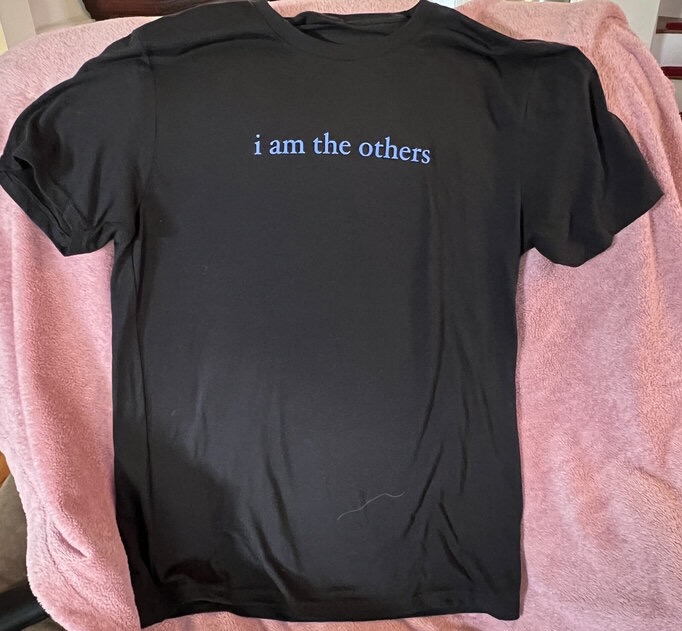
April 24, 2024
Understanding Carries the Light

“Wisdom is valuable. But the ability to find understanding is a gift that all creation enjoys… In some ways, you can think of wisdom of light. But it is understanding that carries the light. Understanding is what wisdom travels through.” —from The Case of the Rigged Race, by Michael Hutchinson
I really love the Ontario Library Association’s Forest of Reading Program, mainly because it’s like our family’s version of sports. (Librarians put together different reading lists for all ages, and school children vote for their faves, culminating in an absolutely bonkers in-person festival every May.) My kids’ schools do a good job running the program, but I borrow the books from the public library too just to provide more of a chance to get through the lists. And not all the books end up working for my children, which is fine, because I want to empower them as readers to follow their own instincts and make their own choices. But when Iris couldn’t get into The Case of the Rigged Race: A Mighty Muskrats Mystery, by Michael Hutchinson, a member of the Misipawistik Cree Nation, I didn’t want to just let it go. Even though I understood that it was not her kind of book—about mostly boys, a dog-sled race, the cover lacks an image of a tween girl sipping boba—but I was thinking about Elaine Castillo’s essay collection How to Read Now and how to be white is so often to assume oneself to be “the expected reader” of a story, no adaptations or great leaps necessary. And I wanted Iris to make the leap of reading a book for which she was not necessarily THE expected reader—Hutchison’s series are set on a Northern reserve and are a rare example of middle grade fiction in which an Indigenous kid would see themself represented. But sometimes (almost all the time) in parenting, if you want to make things happen you have to put your money where your mouth is. So Iris and I sat down and read it out loud together.
And am I ever glad we did. I was not expecting the experience to be so rich, the book itself to be so meaningful. A story about a gang of pre-teen cousins solving crimes sounds like a lot of stories I’ve read before, formulaic and flimsy-of-plot, but Hutchison’s novel (Book Four in a series) is the real deal, which is the kind of thing you know for sure once you’ve read an entire book out loud. Complex vocabulary, lots of fun wordplay, moral conundrums, flawed adult characters whose struggles are shown with real empathy, a portrayal of the realities of northern rez life (the prices at the grocery store!), carefully drawn protagonists, and a mystery that was interesting to unravel—I didn’t see any of that coming. But I especially didn’t expect the kids’ grandfather’s lesson—quoted above—to resonate so strongly with me, and to illuminate so many of the problems that occupy my mind half the time.
Wisdom is light (and so is righteousness), “but it is understanding that carries the light.”
What a gorgeous and absolutely necessary message. I’m so glad I got to receive it. Nice pick, OLA!
April 23, 2024
The Time of My Life: Dirty Dancing, by Andrea Warner
If you’ve read my second novel Waiting for a Star to Fall, in which Dirty Dancing features as a plot point (“Brooke had never seen an abortion in a movie before, and it was surprising, because Dirty Dancing was over thirty years old. So it should have been a throwback, but it was something very new: the character who wants an abortion. There is no other alternative, it doesn’t even make her sad, and she doesn’t change her mind at the last minute, or have a miscarriage as a convenient trick to avoid being an agent in her own destiny. She isn’t even sorry… [And] it seemed symbolic that no one had to live in shame. You could be a fallen woman, and then get up on a stage and dance. This was a huge revelation for Brooke, who had never even considered the possibility, the number of ways a script could go.”) then you’ll know that this movie means a lot to me, and Andrea Warner’s The Time of My Life: Dirty Dancing, a contribution to the ECW Pop Classics Series, only deepened my affection and admiration. Warner explores the movie’s roots as based in “the classic Jewish value” of tikkun olam, its celebration of liberal idealism before the ’60s got complicated, the subversiveness of a film whose entire plot hinges on abortion (screenwriter/producer Eleanor Bergstein was deliberate about that!) at a moment when American women’s reproductive rights seemed assured, and how its iconic soundtrack is the bedrock of the film. Andrea also fangirls in typical Andrea Warner fashion, sharing her own personal connections to the story and also critiquing the film for its shortfalls, how it appropriates Black culture and lacks intersectionality—demonstrating both this is a film substantial enough to be worthy of critique and that LOVING ALL OF ANYTHING (in the way that Baby wished Jerry Orbach could love her) means grappling with the ways it disappoints us too.
April 22, 2024
All In Her Head, by Misty Pratt
Misty Pratt is contending with all kinds of threads in her first book All In Her Head: How Gender Bias Harms Women’s Mental Health, including her own personal story of struggling with mental illness, and that of her grandmother—Chapter One begins, “I was five years old the night my grandmother lost her mind.” Pratt is also a researcher whose approach to her subject is based in science, such a basis only underlining that approaches to treating mental illness so often are not, but then neither are many alternative therapies, and that while mental illness is real, women’s experiences are also affected by a society rife with sexism and inequity, violence against women, and the pathologization of femaleness. Maybe it’s not just “all in her head,” but also sometimes it is, or else it’s in her body, or her family, or her workplace, and that’s not nothing. All this tangle of understanding and experience resulting in loud binaries like SSRIS for everyone vs. anti-psychiatry movements, but Pratt manages to blaze a path through the noise to suggest a kind of middle-ground to contend with the inherent complexity of mental illness (that anyone who’s thinking about it has to be contending with all kinds of threads or else they’re kidding themselves) which necessitates care and precision in applying treatments, as well as the message that women themselves are not broken. Pratt notes that puberty, pregnancy/childbirth and menopause are all times of great hormonal shifts when girls and women are especially vulnerable to mental illness, and imagines how different things might be if this reality was seen as normal as it actually is. Which is not to say that women have to suffer through these periods of their lives, but instead that patients deserve care without the message that there is something broken about them as people, and that researchers and doctors could put the pieces of the puzzle together to affect a more holistic understanding of just what women’s mental health might look like (and how anti-depressants affect them—Pratt cites a study stating that females are exposed to “higher blood drug concentrations and longer drug elimination times than males.”)
Pratt spent years trying to wean herself from anti-depressants, only to have withdrawal symptoms knock her right back down again, and she received very little guidance throughout this process, doctors telling her that she should just stay on the medication because it was simpler that way, because her children needed her to be functioning, internalizing the message that she was flawed and broken, that her mental illness was a genetic inheritance that had to define her. But this would turn out not be the case…
There is not cure for mental illness, Pratt writes, but that doesn’t mean that healing isn’t possible. And she shares her own journey to a deeper understanding of her experiences with psychiatry and medicine, making shifts in her life, working with good therapists, learning that feeling (and even feeling BADLY) is a normal part of being, that her anxiety isn’t just all in her head but also the result of living in a world where terrible things can happen but also that it doesn’t have be debilitating or a guiding force in her life.
And don’t worry, her conclusion is not prescriptive—after decades of people suggesting she try yoga or meditation, she knows that these one-size-fits-all cures are rarely helpful. And while there will be readers who might struggle with their lived experiences of mental illness running counter to Pratt’s (people who are all too happy to continue with their medication, for example), this is very much the point of the book: that everyone’s trajectory of mental illness and wellness will be different.
But through the lenses of gender and gender bias, those different trajectories can all be better understood so that patients can learn to tell a different kind of story, one of wholeness, strength and worth.
April 18, 2024
Book By Book: An English Journey

I wrote about our trip to England via the books I read on our travels, and you can read it on my substack. It was really long and kudos to anyone (everyone?) who reads all the way through. Check it out here.
April 17, 2024
Gleanings

- You will find me in the book aisle. In the book shop. At the book stall. By the book sale. My books are my favourite non-living things. There’s something about collecting a library of books that feels sturdy … like I’m shoring up my house for whatever may come,
- he photos that families didn’t want, all the “mistakes” that at 20×24 were too expensive to just throw away. That’s the gold, I’m realizing. The raw, clumsy, beautiful and unpredictable moments that glue a family together, that make them who they are. That’s what we hold on to. That’s what we stick to our fridge. That’s what we’ll leave behind long after we’re gone.
- But in light of new research I’ve recently learned about, I’m wondering if gratitude might also have the power to push us in the direction of a healthier democracy.
- Are my passions really my passions or have they been just a band-aid for this ache? It’s time to find out what she likes to eat and make a feast.
- Why give yourself away? The question lands differently in my ear now—I hear giving as ongoing life-affirming generosity that returns to you a thousand fold, because now I believe that my self is formed of a deep well, a source that is infinite, and that source is love.
- I seem to return to wanting to paint a rainy day, a lone woman with an umbrella, walking away from the viewer, towards something, purposeful in her stride. She knows where she is heading.
- With the privilege of the financial security that comes with middle age, I have the stage where my involvement can be targeted more towards social good. And that feels good. There is no question.
- But these are days of light. I’m finally open to them after weeks of wondering how to move into a new season, the news grim, some personal issues keeping me awake at night, and no way to find joy in my daily work. Days of beauty. In our old abandoned orchard, a cherry tree is blooming; a plum by the cucumber boxes is about to flower, its scent of sandalwood and honey held in each tiny bud.
- Sometimes our souls are in good shape, and sometimes not so great. If we can roll our eyes at our suffering, we’re probably going to be okay. So I tell myself.
- What I’m trying to say with this is that my heart bursts and breaks, daily. Sometimes I don’t know what to make of it all, of this, of us, and mostly I don’t know how to write about it.
- So then to my blog: a way to make visible the invisible and to bear witness.
